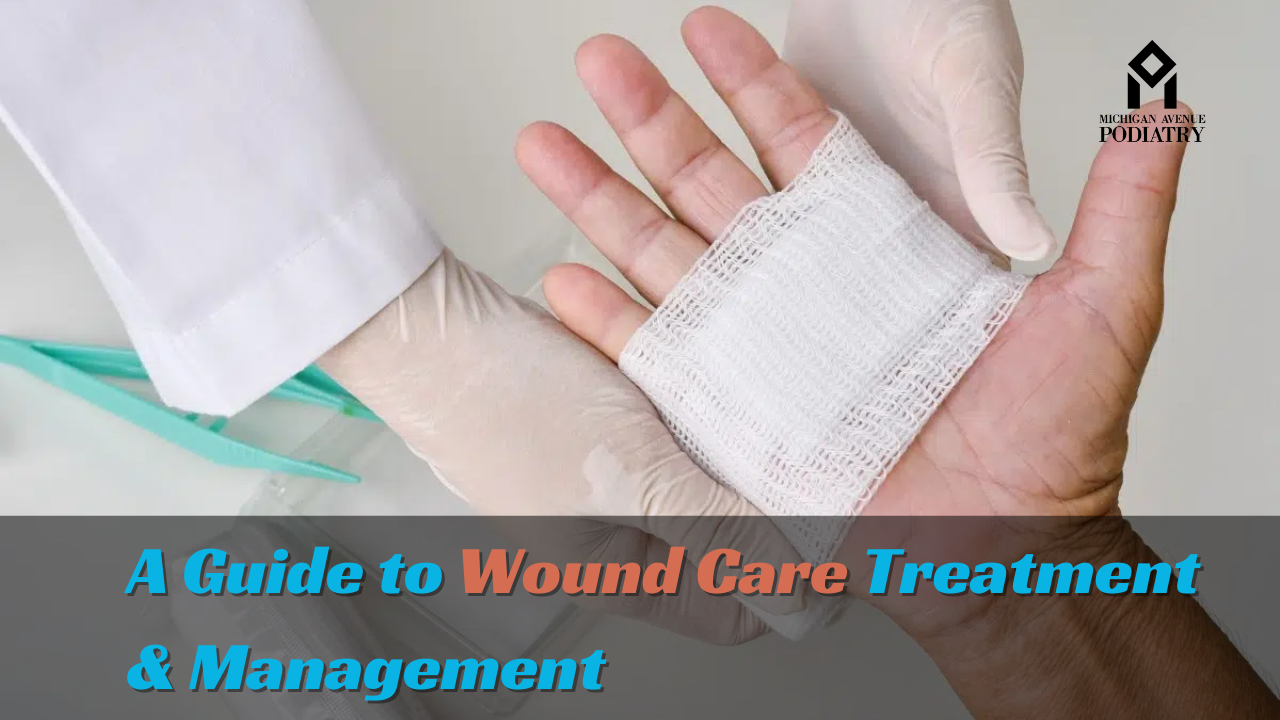Proper wound care is essential for promoting healing, preventing infections, and minimizing complications. Whether it’s a minor cut, a surgical incision, or a chronic wound, timely and appropriate treatment is crucial for optimal recovery. In this comprehensive guide, we’ll delve into the principles of wound care treatment and management, exploring effective strategies and the role of a podiatrist in ensuring the best outcomes.
Understanding What is Wound Care
Wounds can result from a variety of causes, including injuries, surgical procedures, diabetic foot ulcers, pressure sores, and more. Regardless of the type or cause, all wounds require prompt attention and appropriate management to facilitate healing and prevent complications.
Key Principles of Wound Care Treatment:
- Cleaning the Wound: The first step in wound care is cleaning the affected area thoroughly with mild soap and water or a saline solution to remove debris, dirt, and bacteria. Avoid using hydrogen peroxide or alcohol, as these can damage healthy tissue.
- Applying Dressings: Once the wound is clean and dry, apply an appropriate dressing to protect the area and promote healing. Dressings may vary depending on the type of wound and its severity, ranging from adhesive bandages to specialized wound dressings.
- Managing Moisture: Maintaining the right level of moisture is essential for wound healing. In some cases, wounds may require a moist environment to facilitate cell migration and tissue regeneration, while in others, excess moisture must be controlled to prevent maceration and infection.
- Promoting Circulation: Adequate blood flow is critical for delivering oxygen and nutrients to the wound site, which promotes healing. Methods such as elevation, compression therapy, and regular movement can help improve circulation and prevent complications.
- Controlling Infection: Preventing infection is a top priority in wound care. This involves keeping the wound clean, applying topical antimicrobial agents if necessary, and monitoring for signs of infection such as redness, swelling, warmth, or pus.
- Nutrition and Hydration: Proper nutrition and hydration play a vital role in supporting the body’s healing processes. A balanced diet rich in vitamins, minerals, and protein can enhance wound healing and strengthen the immune system.
Role of a Podiatrist in Wound Care Management
Podiatrists, or foot specialists, play a crucial role in managing wounds, particularly those affecting the lower extremities. Here’s how podiatrists contribute to wound care management:
- Assessment and Diagnosis: Podiatrists are trained to assess the severity of wounds, identify underlying factors contributing to poor wound healing (such as vascular disease or neuropathy), and determine the most appropriate treatment approach.
- Debridement: Podiatrists perform debridement, a process that involves removing dead or infected tissue from the wound to promote healing and prevent infection. Debridement may be done using sharp instruments, topical enzymes, or other specialized techniques.
- Wound Dressing and Management: Podiatrists select and apply appropriate wound dressings based on the type, size, and location of the wound. They also provide guidance on how to properly care for the wound at home and monitor progress.
- Offloading and Pressure Redistribution: For wounds on the feet or lower extremities, podiatrists may recommend offloading techniques to reduce pressure and friction on the affected area. This may involve the use of specialized footwear, orthotic devices, or padding.
- Collaboration with Multidisciplinary Team: Podiatrists work closely with other healthcare professionals, such as wound care nurses, vascular surgeons, and infectious disease specialists, to provide comprehensive care for patients with complex wounds.
Conclusion: Effective wound care treatment and management are essential for promoting healing, preventing complications, and improving outcomes for patients. By following key principles of wound care, seeking timely intervention from a qualified podiatrist, and maintaining good overall health, individuals can enhance the healing process and regain their quality of life. If you or a loved one is dealing with a wound, don’t hesitate to consult with a podiatrist for expert evaluation and personalized care. Your feet and overall well-being deserve the best possible attention and treatment.



